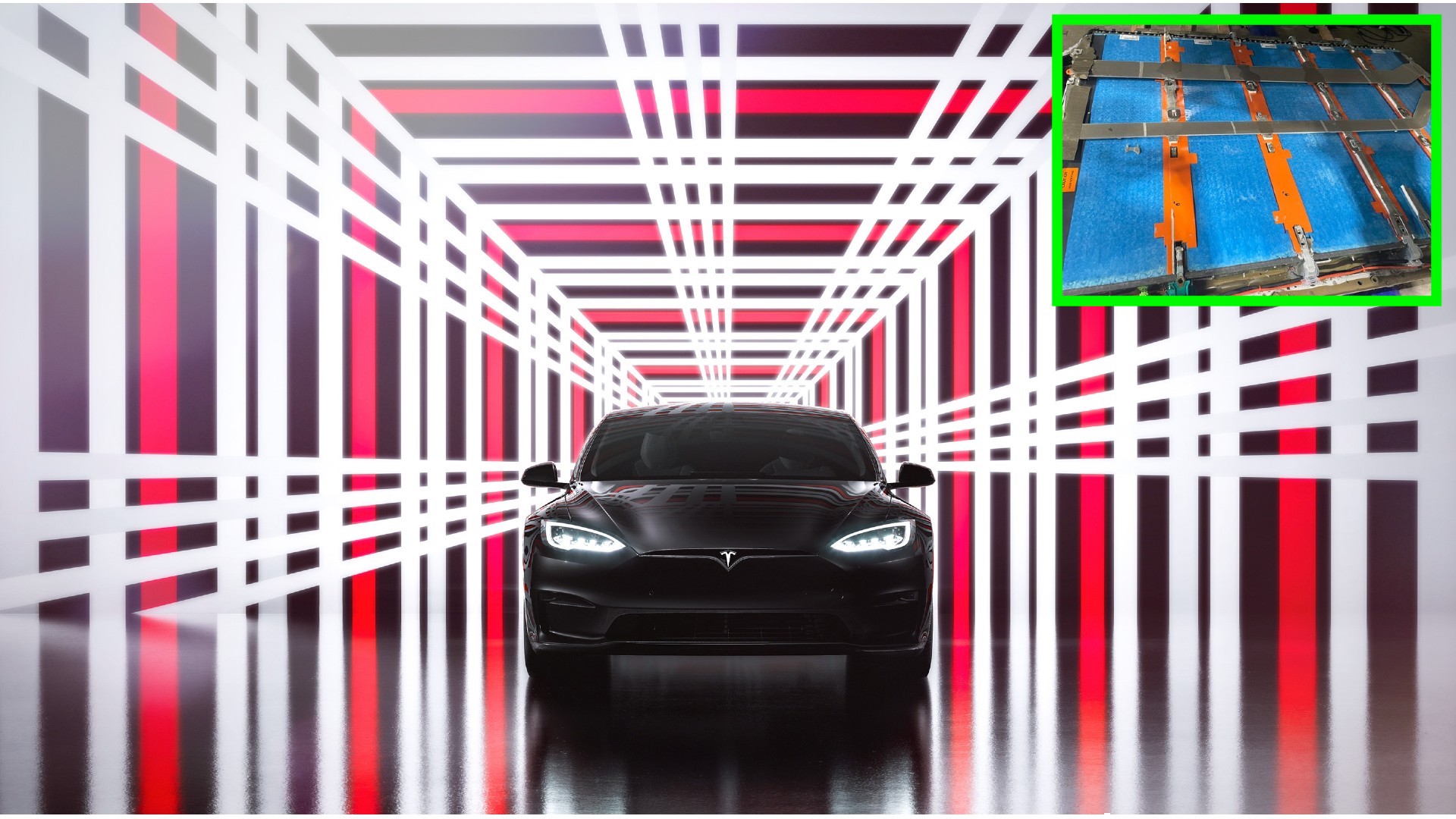
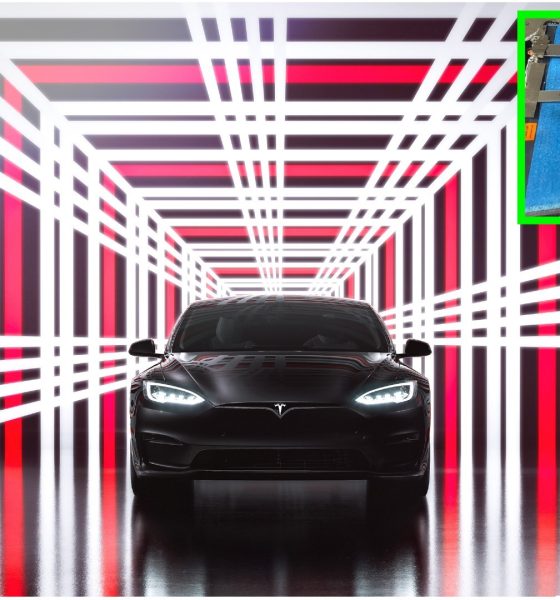
News
Tesla Model S Plaid battery pack shows that 18650 cell innovations are not over yet
A picture of the Tesla Model S Plaid’s 18650 battery pack with its modules visible was recently shared online. The image hinted that Tesla is still in the process of optimizing and innovating its 18650 battery technology, despite the cells being quite a bit long in the tooth.
Tesla is constantly trying to improve its battery technology, which has led to the development of the company’s highly-anticipated 4680 cells. The 4680 cells are expected to be used in vehicles that require a lot of power such as the Semi, Cybertruck, and new Roadster. Amidst the ongoing supply chain challenges and delays in the mass production of 4680 cells from Tesla’s Kato Road facility, however, the company noted that the Model S Plaid, its current flagship sedan, will maintain its use of 18650 batteries.
According to Redditor u/punx, who posted the picture, the Model S Plaid’s battery pack features five large modules, packed to the brim with Panasonic’s 18650 cells. The Reddit user confirmed the cells were 18650 with measurements proving they were 18mm in diameter and 65mm in length. Previous iterations of the Model S have battery packs with as many as 16 individual modules.
A decrease in the number of modules in the Model S Plaid’s battery means fewer parts for the vehicle’s pack, resulting in lower production costs for Tesla. Lowering production costs for its vehicles is a key priority for the company. At the 2021 Annual Shareholders Meeting, Elon Musk mentioned that Tesla has been making a lot of progress in cost reduction, despite the average selling price going down due to the lower prices of vehicles like the Model 3 and Model Y.
“We managed to still do decently well on a gross margin. So, you know, getting the average price down and gross margin up is very difficult,” Musk pointed out. “But we’ve managed to do that. Our goal is really to make the cars as affordable as possible.”
The Model S Plaid (and perhaps the Model X Plaid) might be the last vehicles in Tesla’s lineup that would use 18650 cells. With Tesla focusing its efforts to master the mass production of its 4680 cells — which are more powerful and cheaper to produce — it would not be a surprise if future iterations of the flagship sedan and SUV are fitted with 4680 structural batteries. The 18650 cells are showing their age, after all, as Tesla has been using them since the days of the original Roadster.
If Tesla does utilize its 4680 cells for the Model S and Model X, the vehicles would likely be equipped with nickel-based batteries. The Tesla CEO has previously explained that the supply chain goes all the way back to raw materials like lithium and nickel, which are used to develop the company’s battery cells. During the last earnings call, Elon Musk mulled over the idea of Tesla consolidating its battery offerings down to 2 or 3 form factors, one nickel-based for high-powered vehicles like the Semi and the other iron-based for mass-produced cars like the Model 3.
“So right now, we kind of have the Baskin Robbins of batteries situation, where there’s so many formats and so many chemistries, that it’s like we’ve got like 36 flavors of battery at this point,” Musk said.
“This results in an engineering drag coefficient where each variants of cell chemistry and format requires as certain amount of engineering to maintain it and troubleshoot. And this inhibits our forward progress. So it is going to be important to consolidate to maybe—ideally two form factors, maybe three, but ideally two. And then just one nickel chemistry and one iron chemistry, so we don’t have to troubleshoot so many different variants,” he said.
With Tesla likely retiring its 18650 cells in the future, the Model S Plaid’s five-module battery pack could be seen as one of the final iterations of the technology that the company quite literally used to build its empire. And considering that the 18650 cells are being used in the Model S Plaid, there is no better swan song for the humble batteries.
The Teslarati team would appreciate hearing from you. If you have any tips, reach out to me at maria@teslarati.com or via Twitter @Writer_01001101.

News
Tesla Diner to transition to full-service restaurant as Chef heads for new venture
“I am leaving the Tesla Diner project to focus on the opening of Mish, my long-desired Jewish deli. Projects like Mish and the Tesla Diner require a sharpness of focus and attention, and my focus and attention is now squarely on Mish.”
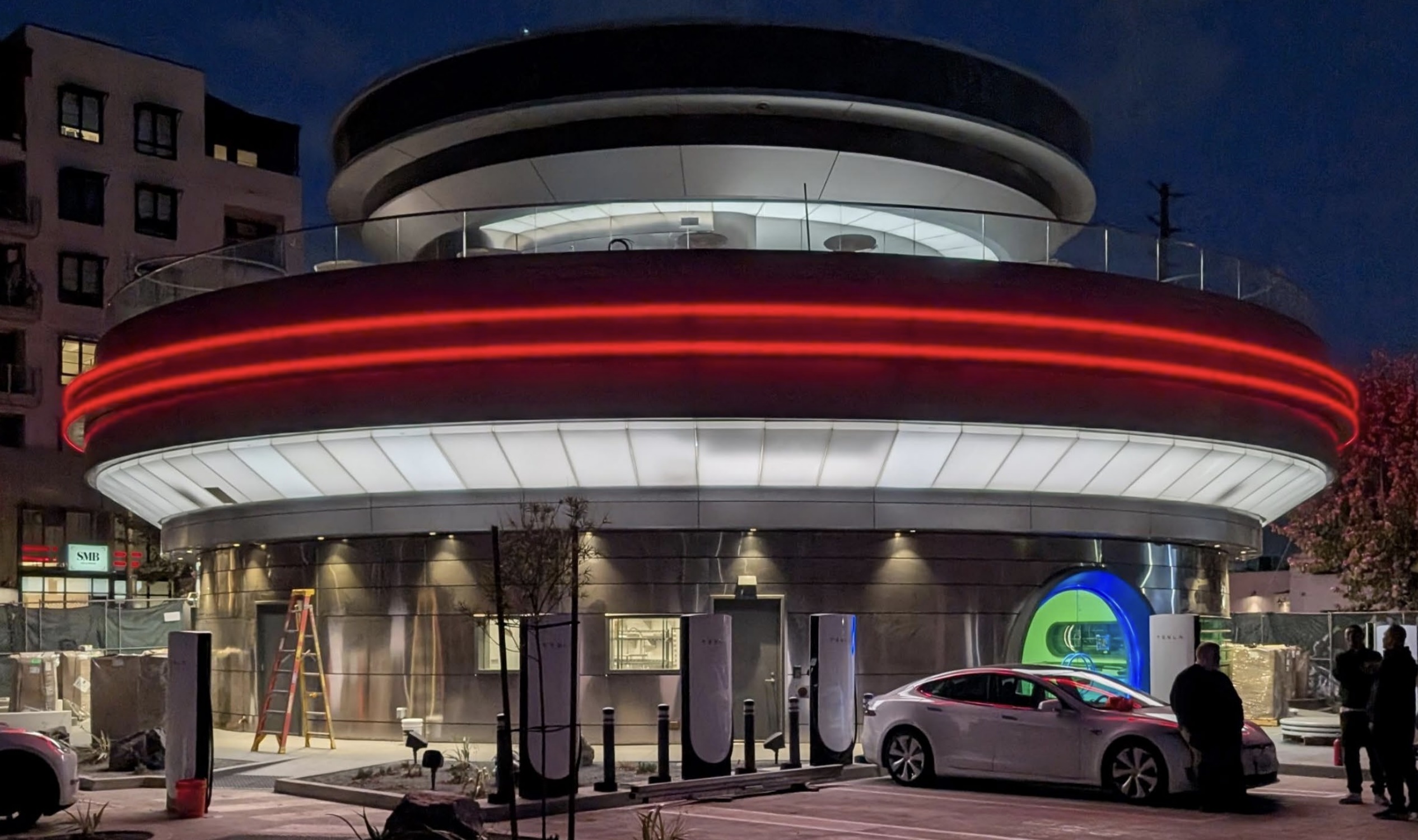
Tesla Diner, the all-in-one Supercharging and dining experience located in Los Angeles, will transition to a full-service restaurant in January, staff said, as Chef Eric Greenspan said he would take on a new project.
A report from the Los Angeles Times says Greenspan confirmed through a text that he would leave the Diner and focus on the opening of his new Jewish deli, Mish.
Greenspan confirmed to the paper:
“I am leaving the Tesla Diner project to focus on the opening of Mish, my long-desired Jewish deli. Projects like Mish and the Tesla Diner require a sharpness of focus and attention, and my focus and attention is now squarely on Mish.”
Greenspan took on the job at the Tesla Diner and curated the menu back in March, focusing on locally-sourced ingredients and items that would play on various company products, like Cybertruck-shaped boxes that hold burgers.
Tesla Cybertruck leftovers are the main course at the Supercharger Diner
The Tesla Diner has operated as somewhat of a self-serve establishment, where Tesla owners can order directly from their vehicles through the center touchscreen. It was not exclusive to Tesla owners. Guests could also enter and order at a counter, and pick up their food, before sitting at a booth or table.
However, the report indicates Tesla is planning to push it toward a sit-down restaurant, full of waiters, waitresses, and servers, all of which will come to a table after you are seated, take your order, and serve your food.
It will be more of a full-featured restaurant experience moving forward, which is an interesting move from the company, but it also sounds as if it could be testing for an expansion.
We know that Tesla is already considering expanding locations, as it will be heading to new areas of the country. CEO Elon Musk has said that Tesla will be considering locations in Palo Alto near the company’s Engineering HQ, and in Austin, where its HQ and Gigafactory Texas are located.
Musk said that the Diner has been very successful in its first few months of operation.
News
Tesla adds new surprising fee to Robotaxi program
“Additional cleaning was required for the vehicle after your trip. A fee has been added to your final cost to cover this service. Please contact us if you have any questions.”
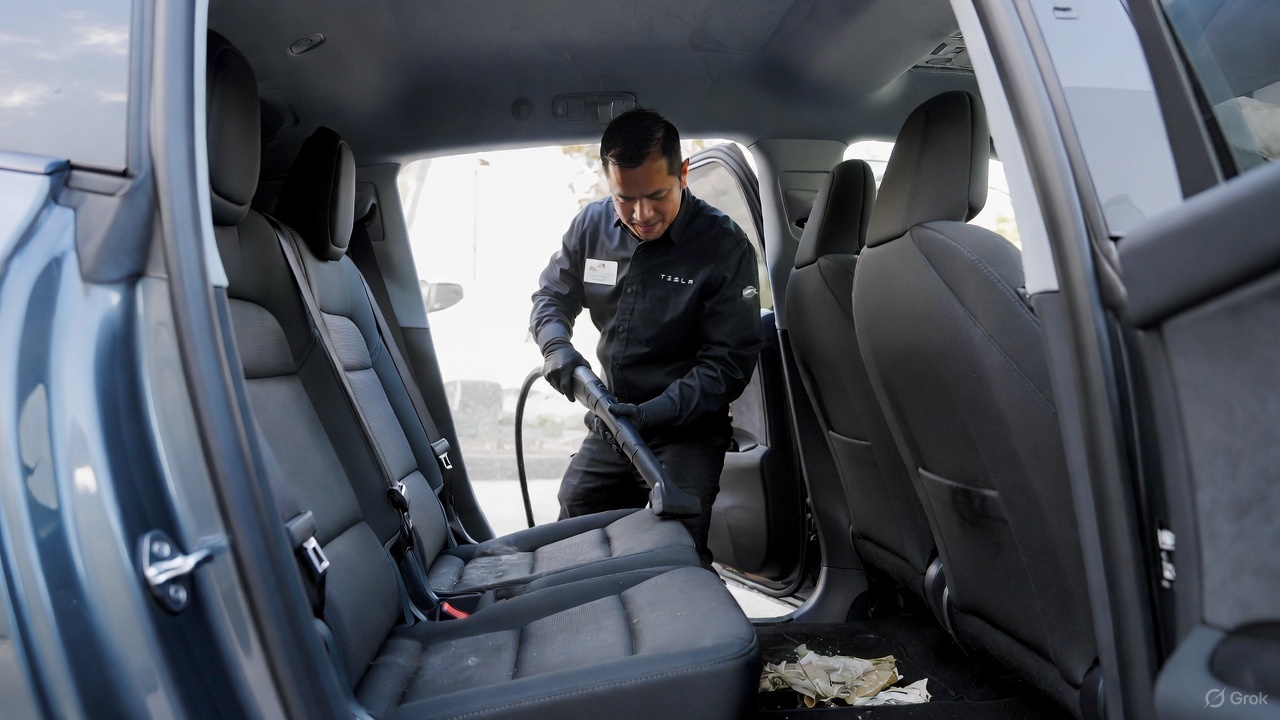
Tesla has added a new and somewhat surprising fee to the Robotaxi program. It’s only surprising because it was never there before.
Tesla shocked everyone when it launched its Robotaxi platform and offered riders the opportunity to tip, only to tell them they do not accept tips. It was one of the company’s attempts at being humorous as it rolled out its driverless platform to people in Austin.
As it has expanded to new cities and been opened to more people, as it was yesterday to iOS users, Tesla has had to tweak some of the minor details of the Robotaxi and ride-hailing platforms it operates.
First Look at Tesla’s Robotaxi App: features, design, and more
With more riders, more vehicles, and more operational jurisdictions, the company has to adjust as things become busier.
Now, it is adjusting the platform by adding “Cleaning Fees” to the Robotaxi platform, but it seems it is only charged if the vehicle requires some additional attention after your ride.
The app will communicate with the rider with the following message (via Not a Tesla App):
“Additional cleaning was required for the vehicle after your trip. A fee has been added to your final cost to cover this service. Please contact us if you have any questions.”
The cost of the cleaning will likely depend on how severe the mess is. If you spill a soda, it will likely cost less than if you lose your lunch in the back of the car because you had a few too many drinks.
This is an expected change, and it seems to be one that is needed, especially considering Tesla is operating a small-scale ride-hailing service at the current time. As it expands to more states and cities and eventually is available everywhere, there will be more situations that will arise.
The messes in vehicles are not a new situation, especially in a rideshare setting. It will be interesting to see if Tesla will enable other fees, like ones for riders who request a ride and do not show up for it.
News
Tesla Model Y sold out in China for 2025
Customers who wish to get their cars by the end of the year would likely need to get an inventory unit.
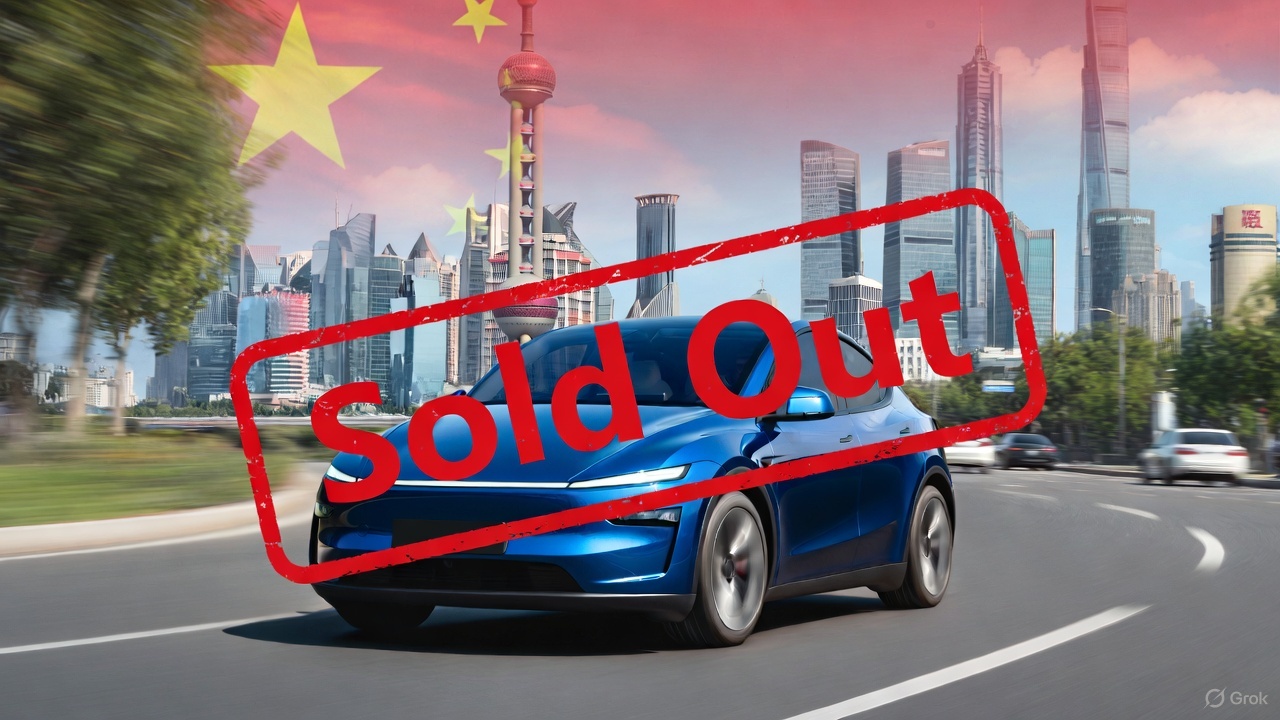
It appears that the Model Y has been sold out for 2025 in China. This seems to be true for the four variants of the vehicle that are currently offered in the country.
Tesla China’s order page update
A look at Tesla China’s order page for the Model Y shows a message informing customers that those who wish to guarantee delivery by the end of the year should purchase an inventory unit. This was despite the Model Y RWD and Model Y L showing an estimated delivery timeline of 4-8 weeks, and the Model Y Long Range RWD and Model Y Long Range AWD showing 4-13 weeks.
As per industry watchers, these updates on the Model Y’s order page suggest that Tesla China’s sales capacity for the remainder of 2025 has been sold out. The fact that estimated delivery timeframes for the Model Y Long Range RWD and AWD extend up to 13 weeks also bodes well for demand for the vehicle, especially given strong rivals like the Xiaomi YU7, which undercuts the Model Y in price.
Tesla China’s upcoming big updates
What is quite interesting is that Tesla China is still competing in the country with one hand partly tied behind its back. So far, Tesla has only been able to secure partial approval for its flagship self-driving software, FSD, in China. This has resulted in V14 not being rolled out to the country yet. Despite this, Tesla China’s “Autopilot automatic assisted driving on urban roads,” as the system is called locally, has earned positive reviews from users.
As per Elon Musk during the 2025 Annual Shareholder Meeting, however, Tesla is expecting to secure full approval for FSD in China in early 2026. “We have partial approval in China, and we hopefully will have full approval in China around February or March or so. That’s what they’ve told us,” Musk said.








